Sergey Plotnikov,
Everyone wants lightning-fast loading of programs and at the same time almost endless space for storing all kinds of data. However solid state drives became a luxury again. Capacious hard drives of 2 terabytes or more have also become noticeably more expensive. And when it is necessary to assemble a relatively inexpensive, but at the same time productive gaming computer, you have to sacrifice something. This “something” usually becomes disk subsystem. Our review includes five inexpensive models hard drives Seagate, TOSHIBA and Western Digital.
Test participants
Minor correction. One of the subjects has a capacity of 2000 GB - model Seagate ST2000DX001. The same Desktop SSHD series also has a 1000 GB drive (ST1000DX001 drive), but it has the same speed characteristics. Except that the number of plates reduced by exactly half makes the younger modification lighter and more energy efficient.
This Seagate drive and another test participant - Western Digital's 2.5-inch 1 TB model - are so-called SSHD - Solid State Hybrid Drives. The principle of their operation is very simple: the Adaptive Memory algorithm (“adaptive memory”) writes the most used data into an 8 GB cache on fast flash memory. This scheme allows you to significantly speed up work operating system and frequently launched applications: games, office programs, graphic editors. SSHD today can hardly be called an innovation: for example, the Seagate model is already a representative of the company’s third generation of hybrid hard drives.
|
Form factor |
|||||
|
Interface |
|||||
|
Declared volume |
|||||
|
Spindle speed |
7200 rpm |
7200 rpm |
7200 rpm |
7200 rpm |
5400 rpm |
|
Average data transfer rate |
156 MB/s |
150 MB/s |
150 MB/s |
100 MB/s |
|
|
Number of plates/heads |
|||||
|
Buffer volume |
|||||
|
Hybrid memory capacity |
|||||
|
Number of parking operations |
|||||
|
Shock resistance, on/off |
80 G (10 ms) / 300 G (2 ms) |
70 G (2 ms) / 350 G (2 ms) |
65 G (2 ms) / 350 G (2 ms) |
65 G (2 ms) / 350 G (2 ms) |
60 G (2 ms) / 400 G (2 ms) |
|
Guarantee |
|||||
|
7100 rub. - for 2000 GB model 5400 rub. - for 1000 GB model |
|||||
|
Request for price: Seagate ST2000DX001 5701 1 |
Request for price: TOSHIBA HDWD110 5701 1 |
Request for price: WD WD1003FZEX 5701 1 |
Request for price: WD WD10EZEX 5701 1 |
Request for price: WD WD10J31X 5701 1 |
In total, the Desktop SSHD line includes three models. In addition to the 1000 GB and 2000 GB drives we'll be looking at, there's a 4000 GB drive that includes four terabyte platters. It is a little slower: the average data transfer speed is 146 MB/s, but the spindle speed of this drive is limited to 5900 rpm.
All SSHDs use 8 GB of MLC memory. The average NAND transfer speed is not impressive - only 190 MB/s. So you shouldn’t expect SSHDs to boost to the level of full-fledged SSDs.
The WD Black series of hard drives is designed for installation in high-performance computers as the main drive. Specifically, the WD1003FZEX model has a small “zest”, which we will talk about a little later. In addition to the 1 TB disk, the series includes drives with capacities of 500 GB, 2 TB, 3 TB, 4 TB, 5 TB and even 6 TB. The performance of hard drives varies depending on the volume: the larger the terabyte, the higher the speed. However, there is nothing surprising in this.
And here is the promised “highlight”. The fact is that the WD10EZEX (Blue series) and WD1003FZEX (Black series) models have exactly the same characteristics. Absolutely! There is an opinion that these are generally the same devices, they just have different labels stuck on them. Buyers asked a logical question: why do these devices have such a significant difference in price? The answer lies on the surface: Black series wheels are covered by a 5-year manufacturer's warranty.
A similar incident arose only with 1 TB hard drives. The rest of the Blue and Black series drives differ not only in their warranty. “Blue” hard drives are positioned by the manufacturer as a kind of golden mean. There are 13 models in total with capacities ranging from 250 GB to 6 TB. I note that the Green line was abolished, some of the hard drives were included in the Blue series. Therefore, there may be some confusion. For example, there are already different 1 TB disks on sale that belong to the same series. At the same time, the WD10EZEX model is equipped with a 7200 rpm motor, and the WD10EZRZ spindle rotates at a frequency of 5400 rpm. Be sure to check the device label before purchasing.
Testing
Test stand:
- CPU: @4.5 GHz
- CPU cooler:
- Motherboard:MSI Z97MPOWER
- Storage device:OCZ Vertex 3, 360 GB
- RAM: DDR3-2133, 2x 8 GB
- Power unit:
- Periphery: , ROCCAT ARVO, ROCCAT SAVU
- Operating system:Windows 10 x64
Let's start the comparison with the results in buffered operations. There is no practical sense in them, but the demonstrated figures speak volumes. As is known, at all times the main criterion of any hard drive volume was calculated. Now technology makes it possible to create commercial versions of hard drives. By 2020 it is planned to release a 3.5-inch drive with a capacity of 20 TB. And such a task does not seem impossible to me. However, the performance of classic hard drives has not changed for a long time. And with the advent of technologies such as SMR (Shingled Magnetic Recording, “tiled magnetic recording” - a way to increase recording density), on the contrary, it even decreases slightly. If the SATA 3.0 bus is no longer sufficient for SSDs, then for HDDs and SSHDs it is still redundant. The AIDA64 test clearly demonstrates this statement.
The second indicator is access time. In general, the hard drives showed quite acceptable results. Models of the WD Black and Blue series generally confirm the version that these are identical drives, differing only in the sticker on the metal case. One more point: SSHDs in terms of access time in general turned out to be slower than classic HDDs. Modern hard drives, with ultra-high recording density per platter and 128 MB of buffer, can boast approximately three times faster response times.
Hard drives demonstrate the most beautiful and highest results in sequential read and write operations. Here mechanical devices can even compete with budget SSDs of previous generations. I would like to note that all devices that took part in today’s testing fully comply with the stated characteristics. As for the read operation, the WD Black model turned out to be the leader here. The disc with the slowest motor, the WD10J31X, is among the laggards.
Sequential write operations are performed faster by the TOSHIBA model. However, this drive does not cope with small blocks as quickly as we would like.
Interestingly, in the ATTO benchmark, the Black series drive is consistently ahead of the Blue series drive. This trend was also observed in other test packages: CrystalDiskMark, AIDA64 and IOMeter. On the other hand, I cannot call the superiority of the “black” WD1003FZEX over the “blue” WD10EZEX significant. I really want to consider these disks the same, and write off the difference as measurement error.
But random write and read operations baffle some hard drives. More precisely, a disk. The “hard” from TOSHIBA found itself in a stalemate. All the grace with which the DT01ACA platform “grinded” data during linear reading/writing instantly disappeared. In this test, the P300 HDWD110 model turned out to be a clear outsider.
Unsurprisingly, the Seagate hybrid hard drive performed best. This is especially noticeable in the CrystalDiskMark benchmark. And again, terabyte Blue and Black show the same result.
Mixed workloads are the trump card of Western Digital hard drives. The control logic copes well with data parallelization, and therefore, although there are two-fold drops in performance, the Black and Blue models look cheerful compared to other models. Once again, the TOSHIBA model finds itself lagging behind. The controller copes with simultaneous read and write modes, to put it mildly, mediocrely.
Finally, in tests emulating real scenarios of using drives in computer system, the undisputed leader was the hybrid HDD Seagate. The remaining seven-thousanders showed approximately the same results. “Hybridnik” from WD closed the peloton.
What makes the Seagate ST2000DX001 so far ahead of other drives in PCMark 7? For example, according to this benchmark, it opens applications four times faster and games twice as fast. Everything is logical, this is exactly what SSHDs were created for. As you can see, there is undoubtedly a profit from having 8 GB of flash memory.
Finally
The performance of modern mechanical drives is easily predicted by such a parameter as spindle speed. 7200 rpm is more than 5400 rpm, which is why such “screws” are faster. Then the particulars that were discussed in this material come into play.
Hybrid hard drives look quite viable, namely the Seagate ST2000DX001 and ST1000DX001 models. Due to the presence of NAND memory, the loading of some applications is noticeably faster. This is demonstrated by benchmarks (for example, PCMark 7) and confirmed by our own feelings. It turns out that a terabyte SSHD from Seagate is cheaper than a terabyte WD Black. I think the choice here is obvious.
At the same time, today's testing showed that there is no significant difference between the Western Digital WD1003FZEX (Black) and WD10EZEX (Blue) models in performance. The latter costs on average 2000-2500 rubles less. This is the price of an extended warranty of up to five years.
The TOSHIBA hard drive excels at very fast linear read and write performance. In real use cases this pays off. Thus, in PCMark 7 the device is not inferior in performance to WD drives. However, in mixed loads and random access to data, the drive frankly gives in.
Finally, the Western Digital WD10J31X model, in my opinion, is not entirely suitable for use as the main drive for home computer. It's expensive, but overall this drive turned out to be the slowest in the test. It is quite suitable for installation in a game console. For example, in .
Still, the main parameters for any hard drive are capacity and reliability. There is no point in talking about capacity: with the exception of the Seagate model, all other drives have the same capacity. Unfortunately, it is unrealistic to assess the degree of reliability of a particular hard drive in that short period of time. You have to completely and completely trust the manufacturer. I think everyone understands perfectly well that the hard drive is one of the most unreliable devices in a computer. And the most difficult thing. Therefore, as Forrest Gump said, shit happens. No one is safe from marriage. For literally every drive on the Internet you can find negative reviews. I would like to add that all five hard drives worked stably. Extraneous noise, no suspicious knocks or strong vibrations were detected.
2016 is coming to an end, and we decided to sum it up with a series of articles about the most notable products in several categories of our catalog. In this article we will talk about hard drives and SSDs - external and internal.
Below we will talk about the criteria that guided our selection. specific models, and we will also list a dozen HDDs and SSDs that we consider the main ones this year - they most deserve your attention.
Criterias of choice
Modern hard drives and SSD drives have long achieved high enough speeds for most tasks, so we will consider their main characteristic to be reliability - no one wants to suddenly lose some or even all of the information stored in the disk memory. All the models listed below have received high marks from experts and testers - they will last for many years and will fail only when they become hopelessly outdated.
Despite the reduction in the cost of SSD drives, HDDs still remain popular - their parameters are quite sufficient for most household tasks, and their low cost allows you to acquire hard drive very large capacity. Therefore, we bring to your attention models that use both technologies.
SSD and HDD drives are used in different devices- both in desktop PCs, and in laptops, and in consoles, and how external drives. Therefore, our selection includes models that are suitable for all these use cases.

Seagate ST10000VN0004
From 1007 rubles | Purpose: for desktop PCs | Volume: 10 TB | Buffer: 256 MB | Rotational speed: 7200 rpm | Interface: SATA 6 Gb/s
One of the leaders in the hard drive market in terms of capacity. ST10000VN004 has as much as 10 terabytes of memory, which is enough to archive a huge amount of information - photos, films in high quality. It will also fit a large number of games - those that do not require the use of SSD memory (to be honest, there are quite a few of these). Naturally, you will have to pay for these 10 terabytes, but if you need such a large volume, then this is one of the best options for their money.
It is impossible not to note the huge buffer size (256 MB!) and the presence of an error correction function, which makes the ST10000VN0004 a good option for home servers.

Western Digital WD60EZRZ
From 335 rubles | Purpose: for desktop PCs | Volume: 6 TB | Buffer: 64 MB | Rotational speed: 5400 rpm | Interface: SATA 6 Gb/s
The best thing ever standard hard a disk that can become the main one in your new or old personal computer. Decent data read and write speeds (175 MB/s), fairly large capacity and low price make it excellent choice for those who are not chasing SSD performance.
The buffer volume is quite high - 64 MB, but the spindle speed of the WD60EZRZ is not the highest - only 5400 rpm. For the latest games, we recommend using a faster drive.
Seagate ST4000DX001
From 305 rubles | Purpose: for desktop PCs | Volume: 4 TB | Buffer: 64 MB | Rotational speed: 5900 rpm | Interface: SATA 6 Gb/s
An amazingly inexpensive and very high-capacity hybrid hard drive with an 8GB SSD inside. As is known, in many situations such hybrids can show speeds almost comparable to the speeds of full-fledged SSD drives, and the cost of each gigabyte of ST4000DX001 is several times lower. Seagate claims that this drive is five times faster than conventional HDDs with a spindle speed of 7200 rpm.
This model, like the previous one, can be an excellent choice if you need a main drive for your desktop PC. It has less memory, but will cope well even with the latest products in the gaming industry.
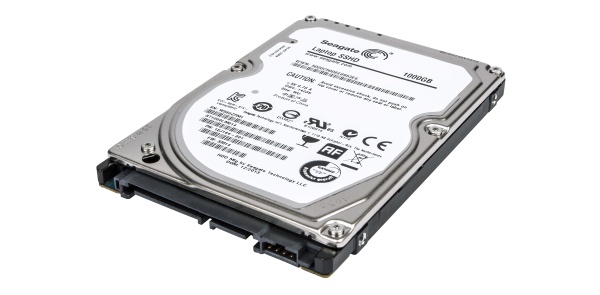
Seagate ST1000LM014
From 98 rubles | Purpose: | Volume: 1 TB | Buffer: 64 MB | Rotational speed: 5400 rpm | Interface: SATA 6 Gb/s
Another hybrid hard drive with 8GB SSD storage. Its main difference from the previous model is the 2.5" form factor, which allows the ST1000LM014 to be used not only in desktop computer, but also in a laptop or game console. If you want to improve the performance of the set-top box or add a terabyte of storage memory to your laptop, then this is a great and very cheap option.
The ST1000LM014 can also act as the main hard drive of a regular PC - if you are not bothered by its relatively small capacity and are pleased with the low price.

Western Digital WDBNFV0040BBY
From 351 rubles | Purpose: external | Volume: 4 TB | Rotational speed: 5400 rpm | Interface: USB 2.0, USB 3.0 | Data encryption
Very capacious, compact, stylish and, most importantly, not too expensive external hard disk. WD My Passport Ultra will not only handle the transfer of large amounts of data, but will also encrypt it so that if something happens, important information did not fall into the hands of criminals. In addition, buyers of this model get access to cloud services data archiving using the WD Backup utility - your data can be easily transferred to Dropbox or Baidu servers.
With all this, the speed and ease of working with this model remain at a decent level. For example, it can be connected even to old PCs and other devices that have USB ports of the old 2.0 standard.

ADATA SE730
From 325 rubles | Purpose: external | Volume: 250 GB | Flash memory type: MLC 550 Mb/s / 450 Mb/s | Interface: USB 3.1 Type-C
A very compact and at the same time very high-speed external SSD drive, which, for example, photographers or videographers will surely like. This is a real pocket rocket, with which you can read a movie in UHD resolution in just a few seconds. In addition, the case of this model is reliably protected from water and dust - it has received an IP68 certificate.
With all its advantages, the ADAA SE730 is also very inexpensive, the main thing is to make sure that it latest interface did not cause any problems when connecting to old devices (you will need an adapter to a regular USB, which is included in the kit).
![]()
Transcend TS1TESD400K
From 921 rubles | Purpose: external | Volume: 1 TB | Flash memory type: MLC | Data read/write speed: 410 Mb/s / 380 Mb/s | Interface: USB 3.0
If you need a much larger external SSD than the ADATA SE730, then this is your option. TS1TESD400K is slightly inferior in speed (but do not think that it is slow - it is still a modern and very fast SSD!), and it connects through the old USB standard 3.0, but it offers a whole terabyte of memory. And all this terabyte fits into a very thin case weighing only 56 g!
For obvious reasons, you will have to pay noticeably more money for an SSD of this size - apparently, wait for flash memory to become cheaper to the level of memory in hard drives we will have at least a few more years.
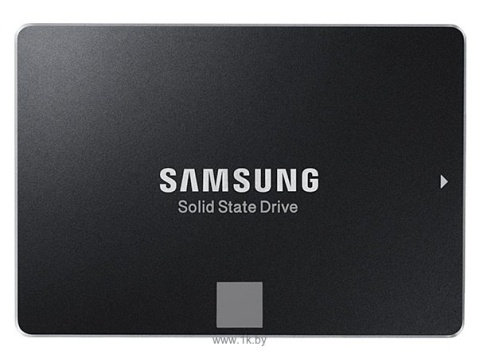
Samsung MZ-75E2T0BW
From 1388 rubles | Purpose: for desktops, laptops and consoles | Volume: 2 TB | Flash memory type: 3D V-NAND | Data read/write speed: 540 Mb/s / 520 Mb/s | Interface: SATA 6 Gb/s
Samsung is a recognized leader in the SSD market, and the MZ-75E2T0BW is one of the most popular models Large capacity SSD. All these 2 terabytes in most tests are ahead of competitors in speed and reliability thanks to the use of proprietary 3D V-NAND technology, so we can safely call this drive an excellent choice if you have the appropriate budget - both for desktop PCs, laptops or even consoles ( however, in this case its speed will change little).
Naturally, a high-speed 2 terabyte SSD simply cannot be cheap. If you cannot afford a flash drive of this capacity, we recommend that you pay attention to the next model.

Kingston SKC400S37/512G
From 410 rubles | Purpose: for desktops, laptops and consoles | Volume: 512 GB | Flash memory type: MLC | Data read/write speed: 550 Mb/s / 530 Mb/s | Interface: SATA 6 Gb/s
A fantastically fast SSD drive with a fairly large capacity and a fairly low cost. Thanks to its characteristics, SKC400S37 is an ideal choice as system disk for any modern personal computer or laptop. If you don't need terabytes free space, then this model is almost ideal.

Plextor PX-128M8PeG
From 213 rubles | Purpose: for desktops and laptops | Volume: 128 GB | Buffer: 512 MB | Flash memory type: MLC | Data read/write speed: 2000 Mb/s / 900 Mb/s | Interface: M.2 PCI-E 3.0 x4 (NVMe)
One of the few SSD drives presented in our catalog that have the M.2 form factor, connect via the PCI-Express bus and support NVMe technology. If you suddenly lack the speed of conventional SSD drives, then this model will definitely satisfy all your needs. For example, this model is ideal for any modern games.
The only drawback of the PX-128M8PeG is its very small capacity. If you need and maximum speed, and a relatively large amount of memory - we recommend paying attention to OCZ RVD400-M22280-1T. However, you will have to pay almost five times more for it.
When it comes to data storage, there is no one size fits all solution. Although cloud storage has become more accessible, we're still very reliant on local storage and that's not going to change anytime soon. Now that SSDs have become more affordable and finally mainstream, consumers have many high-performance options to choose from, whether internal storage, external or network-connected, reports .
With dozens of hours of testing storage devices over the past year alone, we have a pretty good idea of which devices you should buy right now, divided into five categories:
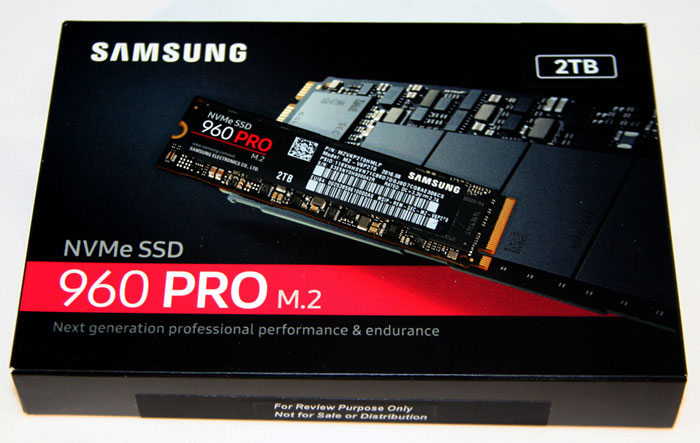
The Samsung SSD 960 Pro is now on sale and this is great news for enthusiasts as it is the best consumer SSD model you can buy in the world. Priced at at least $0.61 per gigabyte, the 960 Pro series isn't cheap. However, it quickly accepts and moves data at speeds we haven't previously seen in our tests.
For example, retrieving a 38 GB file on the hard drive took only 39 seconds thanks to the constant bandwidth almost 1 GB/s. This made the 960 Pro almost 30% faster than Samsung's previous flagship, the 950 Pro. Compared to the Intel SSD 750, the 960 Pro series has twice the performance in this file retrieval test.


The most affordable model in the 960 Pro series will cost $330, but will give you 512 GB of memory. The 1TB model we reviewed costs $629, which is $0.61 per gigabyte, while the 2TB model costs $1,299, or $0.63 per gigabyte.
Honestly, not right now worthy alternative Samsung SSD 960 Pro for those looking for maximum performance.
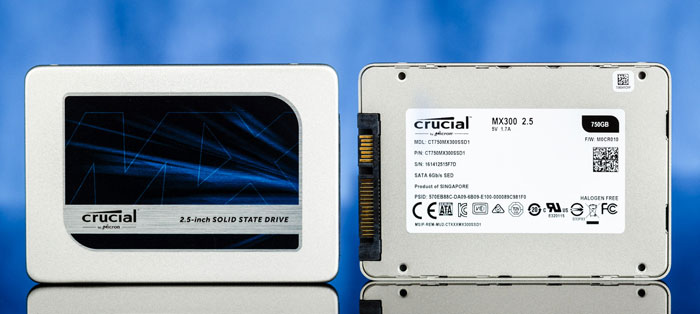
If all you want is millisecond access times at a good price, then we recommend the very friendly Crucial MX300 series. Available in 2.5-inch SATA or M.2 (2280) interfaces, the M300 series is matched by few in terms of savings.
The 275GB model costs just $70, which is an incredibly low cost - 1GB for just 25 cents. The 525GB model costs just $123, while the 750GB model costs $170. There are also 1TB and 2TB models selling for just $250 and $500, respectively.
In truth, most users will not notice a difference in performance between the Crucial MX300 and, say, new Samsung SSD 960 Evo or even 960 Pro, for the most part. Things like loading time and sending time will undoubtedly be the same.
Alternative:
Samsung SSD 960 Evo

The Samsung 960 Evo SSD is a budget alternative to the 960 Pro series and a popular drive that many users have chosen over the past few years.
While we have yet to see hard evidence of how good Samsung's Polaris 48-layer TLC V-NAND is driving the SSD, we think it will perform quite well. Early performance figures include the 960 Pro and the previously released SM961, which is an OEM-only product.
The 960 Evo series starts at just $130 for the 250GB model, which is a very reasonable price of $0.52 per gigabyte for a drive advertised with 3.2GB/s read speeds and 1.9GB/s write speeds. Meanwhile, the 500GB model costs $250, and the largest model costs $480 for 1TB of storage.

Buying hard HDD associated with greater capacity and reliability than performance, but the WD Black 6 TB can surprise in some tests with read and write speeds of 220 MB/s. That's almost 50% of the performance of today's fastest SATA 6Gb/s SSDs - keep in mind we're comparing the NAND chip to a 7200 RPM spinning drive.
Storage Review conducted synthetic and real tests of hybrid SSHD drives - Seagate Desktop SSHD 4 TB and WD Blue SSHD Desktop 4 TB. Granted, the WD Black 6TB didn't always outperform its NAND-enabled competitors, but it still performed admirably. In synthetic tests, the drive had a dominant display with a sequential read speed of 214.53 MB/s and a sequential write speed of 214.91 MB/s, and with an HTPC workload of 81.85 MB/s and 1,100 IOPS, while the average the latency was calculated to be 7.3 ms. Overall, this is a noticeable performance boost over the previous WD Black model, with a significant increase in memory.
The drive features an LSI controller, 128 MB DRAM, and dynamic cache technology that improves real-time caching algorithms by distributing and optimizing the cache between reads and writes. WD also claims improved reliability and backs the drive with a 5-year warranty. User reviews on Amazon are overwhelmingly positive.

Alternative:
If you're looking for something to complement the value offered by the Crucial MX300 SSD, we suggest the WD Blue Series. The 3TB model isn't very small, and it's safe to assume you'd lose quite a bit of value for 2TB. On the other hand, if you need more space, then the 4TB version is also suitable.

There is not a huge difference between the different 3.5-inch external solutions for hard drives. For those who need something big for Reserve copy or data transfer, performance probably won't be a huge priority here and something like the Seagate Expansion 3TB or WD My Book 3TB (both USB 3.0) will do just fine.
For professionals who want to quickly move data or even disconnect external devices storage, we highly recommend the Samsung T3. This portable SSD easily outperforms flash drives and competing SSDs, runs cool, and is super easy to boot.
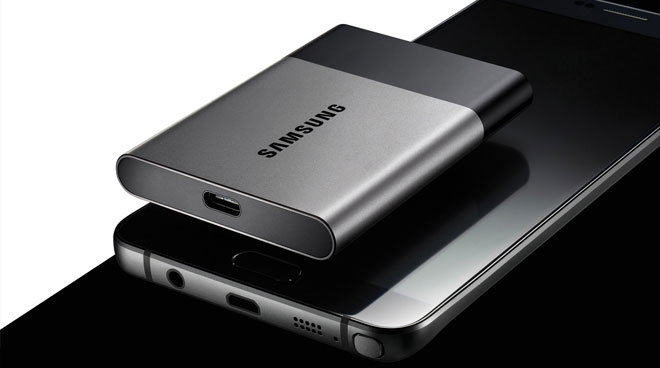
Of course, portable SSDs aren't cheap, but the T3 doesn't come with a hefty price tag. The 250GB model starts at $118, while the 500GB version starts at $180. There's also a 1TB model for $370, and you can even get a 2TB model if you can stomach the $730 asking price.

We test more NAS devices than we end up officially reviewing, and without a doubt, the best NAS server for home users and small businesses is the QNAP TS-451A. This network device data storage is equipped with innovative USB port QuickAccess, which can be used to complete quickly initial installation NAS Moreover, it can also be used to directly access files and data stored on the NAS, essentially offering the usual features.
